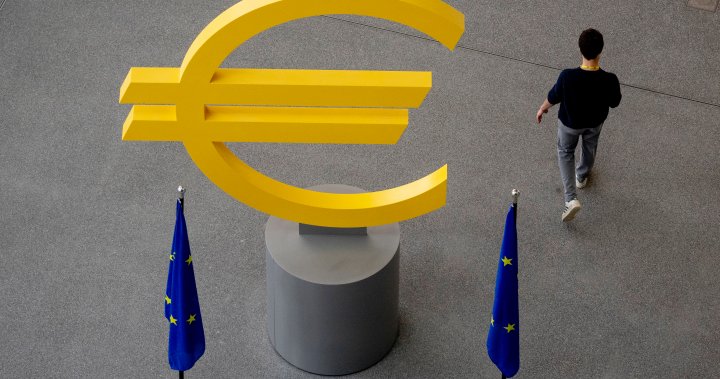The European Central Bank, which sets interest rates for the 20 countries that use the euro currency, cut borrowing costs once again on Thursday after figures showed inflation across the bloc falling to its lowest level in more than three years and economic growth waning.
The bank’s rate-setting council lowered its benchmark rate from 3.5% to 3.25% at a meeting in Llubljana, Slovenia, rather than its usual Frankfurt, Germany, headquarters.
The rate cut is its third since June and shows optimism among rate-setters over the path of inflation. Inflation sank to 1.8% in September, the first time in three years that it has been below the ECB’s target rate of 2%.

Get breaking National news
For news impacting Canada and around the world, sign up for breaking news alerts delivered directly to you when they happen.
In a statement accompanying the decision, the ECB said recent economic evidence shows that “the disinflationary process is well on track.” However, it predicted an inflation pick-up in the coming months, before a return to its target in the course of next year.
Though the bank did not signal that it would cut interest rates again at its next meeting in December, analysts think mounting evidence of an economic slowdown in the eurozone will prompt it do so. All eyes will be on ECB President Christine Lagarde at her press conference later Thursday.
“The trends in the real economy and inflation support the case for lower rates,” said Holger Schmieding, chief economist at Berenberg Bank.
One reason why inflation has fallen around the world — it’s down at 2.4% in the U.S. and 1.7% in the U.K. — is that central banks dramatically increased borrowing costs from near zero during the coronavirus pandemic when prices started to shoot up, first as a result of supply chain issues built up and then because of Russia’s full-scale invasion of Ukraine in early 2022, which pushed up energy costs.
The ECB, which was created in 1999 when the euro currency was born, started raising interest rates in the summer of 2021, taking them up to a r ecord high of 4% in Sept. 2023 to get a grip on inflation by making it more expensive for businesses and consumers to borrow, but that has come at a cost by weighing on growth.
Other central banks, such as the U.S. Federal Reserve, have also started to cut interest rates as inflation rates have fallen.
© 2024 The Canadian Press





